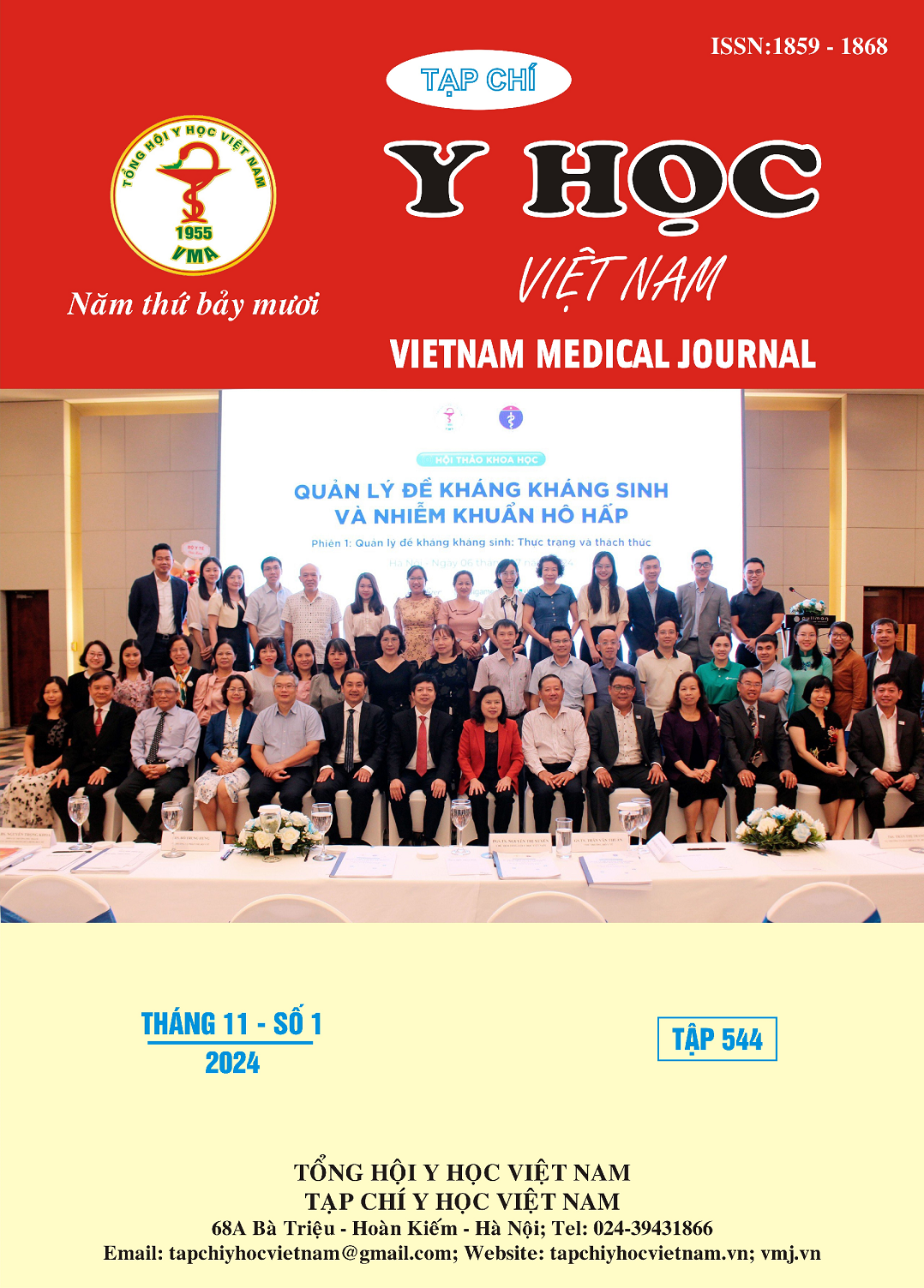CAN THIỆP NÚT ĐỘNG MẠCH MÀNG NÃO GIỮA ĐIỀU TRỊ MÁU TỤ DƯỚI MÀNG CỨNG MẠN TÍNH: KỸ THUẬT VÀ CÁC ĐẶC ĐIỂM HÌNH ẢNH TRÊN CHỤP MẠCH SỐ HÓA XÓA NỀN
Nội dung chính của bài viết
Tóm tắt
Mục đích: Mô tả quy trình kỹ thuật nút động mạch màng não giữa và các đặc điểm hình ảnh của động mạch màng não giữa trên chụp mạch số hóa xóa nền liên quan với can thiệp trong điều trị máu tụ dưới màng cứng mạn tính. Phương pháp: Nghiên cứu mô tả cắt ngang trên 26 bệnh nhân máu tụ dưới màng cứng mạn tính được của can thiệp nút động mạch màng não giữa tại khoa Chẩn đoán hình ảnh bệnh viện Việt Đức trong thời gian từ 11/2021 đến 2/2023. Kết quả: Tất cả các ĐM màng não giữa trong nghiên cứu đều xuất phát từ ĐM hàm. 100% ĐM màng não giữa cùng bên máu tụ dưới màng cứng mạn tính đều có dấu hiệu ngấm thuốc dạng sợi bông và thoát thuốc ở ngoại vi trên DSA. Đường kính trung bình tại gốc của các ĐM màng não giữa cùng bên máu tụ lớn hơn bên không có máu tụ có ý nghĩa thống kê với p = 0.00. 1 bệnh nhân có ĐM mắt bên phải xuất phát từ ĐM màng não giữa. 28.8% ĐM màng não giữa có vòng nối với ĐM mắt qua nhánh ổ mắt hoặc nhánh lệ màng não. 1 bệnh nhân có giả phình ĐM màng não giữa bên trái, 1 bệnh nhân có thông giữa nhánh trước của ĐM màng giữa bên trái với tĩnh mạch trong xương. Kết luận: Các hình ảnh quan sát được trên chụp ĐM màng não giữa (ngấm thuốc dạng sợi bông, thoát thuốc) gợi ý nguyên nhân của máu tụ dưới màng cứng mạn tính là do chảy máu từ nhiều ĐM tân tạo chưa trưởng thành trong màng của khối máu tụ, được cấp máu từ ĐM màng não giữa. Đây là cơ sở của can thiệp nút ĐM màng não giữa điều trị máu tụ dưới màng cứng mạn tính – một phương pháp mới đang được nghiên cứu. Đánh giá cẩn thận giải phẫu ĐM màng não giữa trên DSA có vai trò rất quan trọng trong chiến lược can thiệp nhằm đạt được hiệu quả và tránh các biến chứng
Chi tiết bài viết
Từ khóa
giải phẫu, vòng nối nguy hiểm, máu tụ dưới màng cứng mạn tính, động mạch màng não giữa, nút mạch.
Tài liệu tham khảo
2. Ban SP, Hwang G, Byoun HS, et al. Middle Meningeal Artery Embolization for Chronic Subdural Hematoma. Radiology. 2018; 286(3):992-999. doi:10.1148/radiol.2017170053
3. Link TW, Boddu S, Paine SM, Kamel H, Knopman J. Middle Meningeal Artery Embolization for Chronic Subdural Hematoma: A Series of 60 Cases. Neurosurgery. 2019;85(6):801-807. doi:10.1093/neuros/nyy521
4. Bonasia S, Smajda S, Ciccio G, Robert T. Middle Meningeal Artery: Anatomy and Variations. AJNR Am J Neuroradiol. 2020;41(10):1777-1785. doi:10.3174/ajnr.A6739
5. Hashimoto T, Ohashi T, Watanabe D, et al. Usefulness of embolization of the middle meningeal artery for refractory chronic subdural hematomas. Surg Neurol Int. 2013;4:104. doi:10.4103/2152-7806.116679
6. Pouvelle A, Pouliquen G, Premat K, et al. Larger Middle Meningeal Arteries on Computed Tomography Angiography in Patients with Chronic Subdural Hematomas as Compared with Matched Controls. Journal of Neurotrauma. 2020;37(24):2703-2708. doi:10.1089/neu.2020.7168
7. Takizawa K, Sorimachi T, Ishizaka H, et al. Enlargement of the middle meningeal artery on MR angiography in chronic subdural hematoma. J Neurosurg. 2016;124(6):1679-1683. doi:10.3171/2015.5.JNS1567


